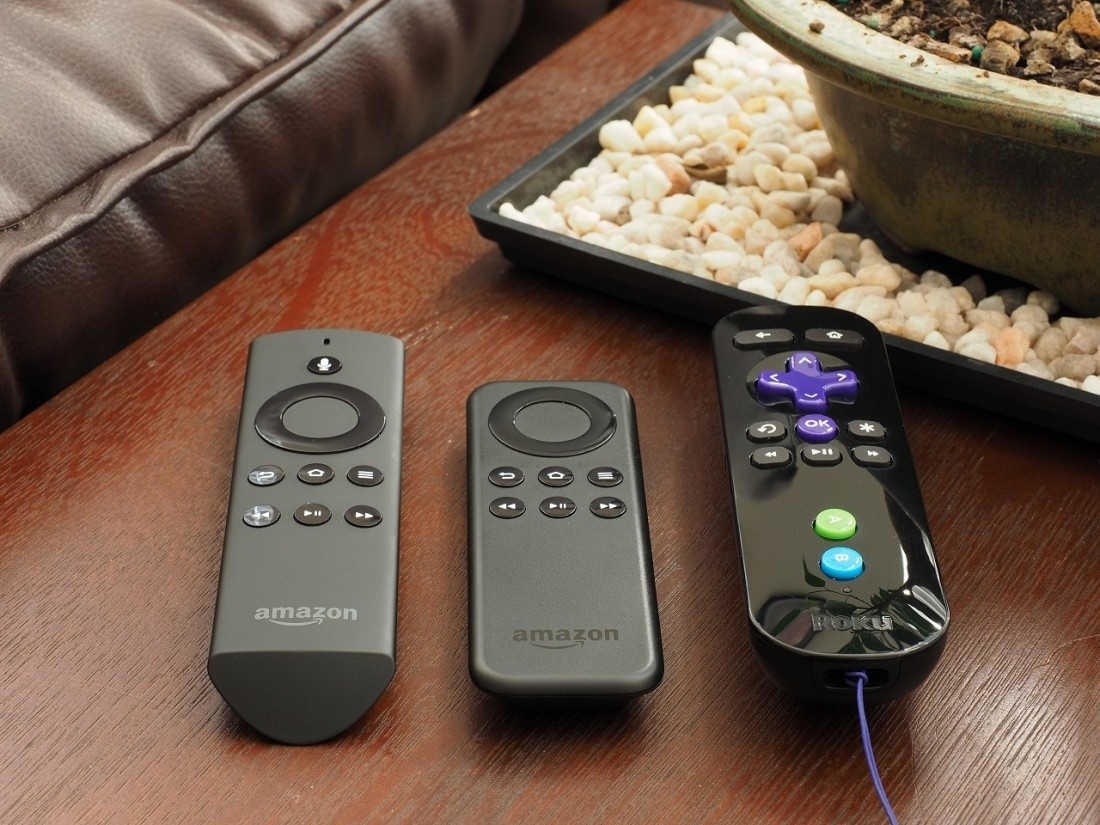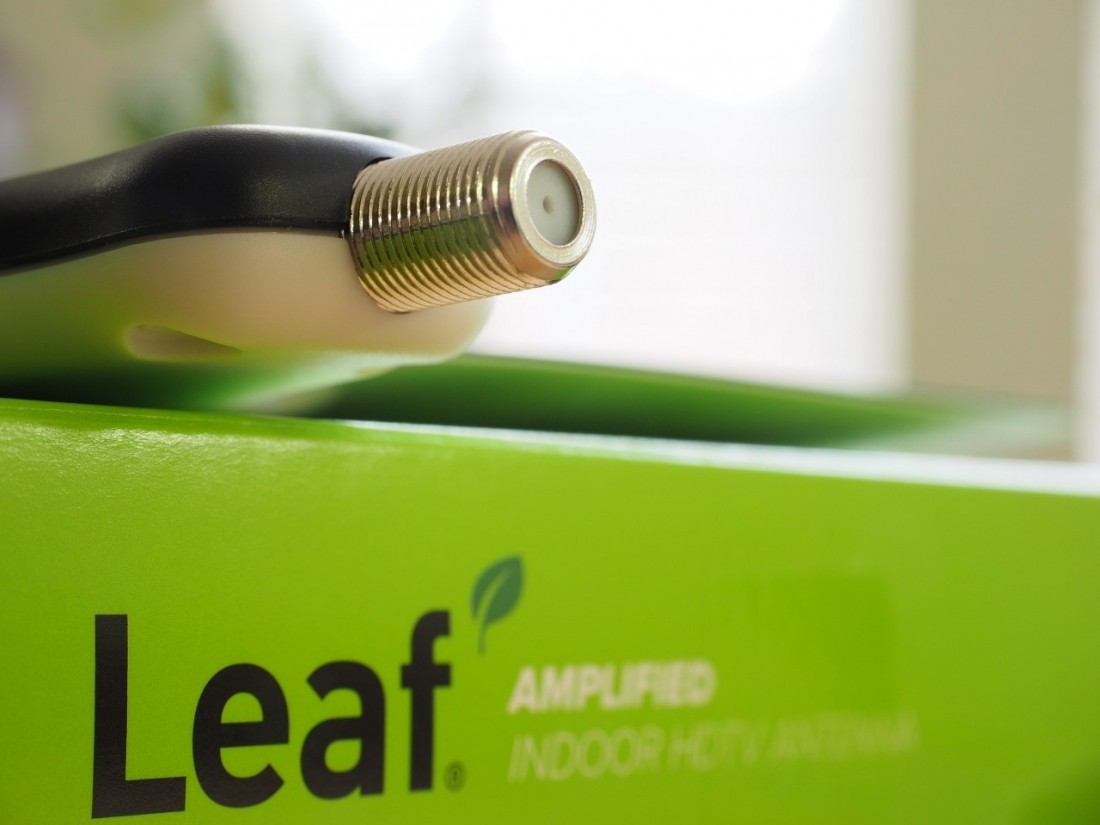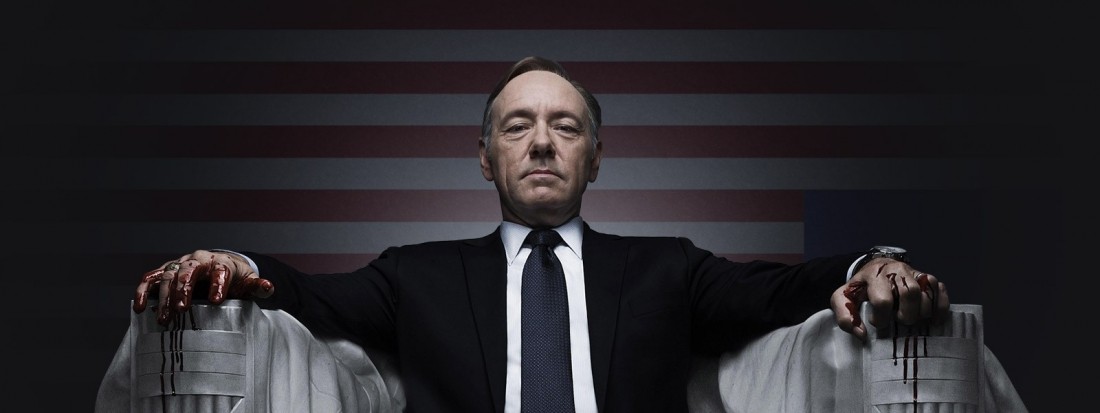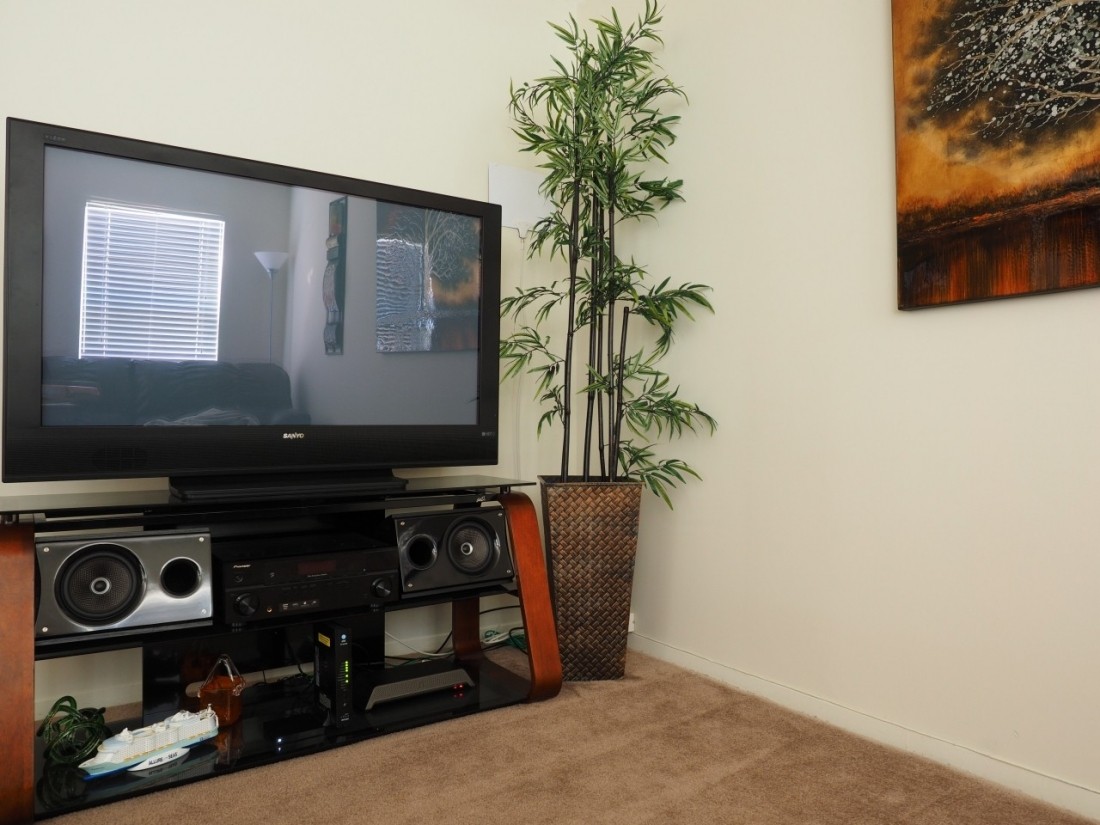It's been a month since I disconnected my AT&T U-verse TV service. It's not the first time, but something I've done half a dozen times over the last several years. What's different about this time and why I'm compelled to write about it is the fact that I have no intentions of going back.
I've never been a huge television or movie buff although I occasionally get sucked into a good series like Breaking Bad or Dexter (before the writers drove it into the ground, of course). Most TV shows can now be found online through services such as Netflix, but what has kept me coming back to cable each year is live sports.
Each Saturday from late August through the end of November, I'm locked into the college football season. I also enjoy watching the various bowl games throughout December and into early January, and watch TV at night before falling asleep. For me it's college football, but name your pick, odds are if you wanted to cut the cord but wanted to keep watching sports you were out of luck.
Then last February Sling TV launched what I consider a game-changing over-the-top service. It's the first of its kind to deliver live sports from ESPN. I'd always told myself that if there was a way I could watch my team during football season that didn't involve cable, I'd drop it in an instant. Well, I'm now an official cord cutter and this has been my experience...
The traditional cable model is destined for extinction
The cable and satellite TV industry hasn't changed much in the past several decades. Most providers offer a core package that often includes the major networks like ABC, CBS and Fox as well as a smattering of other channels. Additional channels are offered through a tiered model, with each level bundling in dozens or even hundreds of additional channels for a set fee.
As it turns out, there are a lot of people out there like me that love sports, and providers are well aware of this. Thus, these coveted sports channels are usually bundled into the upper tiers along with other popular networks. Subscribers often end up paying anywhere between $70 to $150, or more, to get everything they want. Sure, you have access to a few hundred channels but let's be honest, most people only watch a handful at most.
Cutting the cord sounds trendy enough but the reality is, there's quite a bit of thought and consideration that goes into it, and there will be some compromises.
This model has been quite lucrative over the years but the times, they are a changin'.
Consumers would love to see a la carte pricing - paying only for the channels they want. Naturally, the cable industry has little interest in unbundling channels. Such a move would also mean that most of those stations that nobody watches would likely go under. After all, sports channels in higher tiers are what keep many of the less interesting channels afloat.
The industry has, however, been willing to move some content online and offer mobile apps so users can watch content on their tablet or smartphone. The catch (isn't there always a catch?) is that you almost always have to be a cable subscriber in order to gain access to a broadcaster's mobile offering, defeating the purpose for many.
Mobile is a huge part of the equation as it's one of the primary drivers of the change we're currently witnessing in the industry. Providers also have to deal with renewed threats from services like Amazon Prime Video, Hulu Plus and Netflix in the form of original content that's been extremely captivating. Then there's also a bevy of other smaller on-demand providers.
What's becoming abundantly clear is the fact that technology is reshaping the industry and how we consume media. It's not a stretch to imagine that future generations won't watch television on television. Cable providers will ultimately be forced to update their business models or get left behind. The good news for consumers is that it's already happening.
What you should consider before cutting the cord
Cutting the cord sounds trendy enough but the reality is, there's quite a bit of thought and consideration that goes into it if you want to retain some aspects of your current service and be happy with the decision. I can already tell you now that there will be some compromises.
I was already leaning heavily in favor of becoming a cord cutter but thought it'd be best to dig a bit deeper. What other programming am I interested in?
Despite how it may sound thus far, college football isn't the only thing I enjoy watching. I also like Top Gear, The Walking Dead, Better Call Saul, Tiny House Nation, The Ultimate Fighter, Bellator MMA, The Tonight Show Starring Jimmy Fallon, Saturday Night Live, The Last Man on Earth, the occasional UFC pay-per-view event and Scandal. Then I also wanted access to shows my girlfriend is into like American Idol, Grey's Anatomy, Friends and How I Met Your Mother.
Exploring your options: The Big Three, Standalones, Live TV
Now the tricky part is deciding which services you want to invest in. Here we have the usual suspects, or as I like to call them, The Big Three – Netflix, Amazon Instant Video and Hulu. But a recent trend is now finally seeing networks like HBO, Showtime and CBS launch their own standalone, over-the-top streaming services, while new Live TV alternatives bring the linear programming experience over to the internet and complete the current cord-cutter landscape.
For many, a combination of these services will provide enough content to fill the void of cable. If push comes to shove, one could still get by with a subscription to just one service if you're willing to be open and try stuff you might not otherwise watch.
The universe of streaming services doesn't end here, of course. Some smaller and niche options include Tubi TV (free online movies, ad supported), Crackle (free TV shows and movies with commercials), Shout Factory (lots of older content for free), Qello (concerts and other music-related content), Viewster (original movies and television shows, ad-supported), Pluto TV (more than 100 Internet channels, completely free) and VUDU (Wal-Mart's content delivery service).
If, like me, you already have a general idea of the movies and shows you'd like to watch you can find out which services stream them by looking them up on sites like canistream.it, WhereToWatch.com, GoWatchIt.com, and flixfindr.com.
Selecting the right hardware
As someone that was building HTPCs more than a decade ago, I often scoffed at the idea of owning a smart TV or dedicated streaming box. Once I actually tried a few of these boxes, however, I quickly realized what all of the fuss was about. Unless you already have a smart TV or a modern game console, you'll definitely want some type of streaming hardware and unfortunately, that decision will largely be dictated by which service(s) you're after.
Don't forget about OTA transmissions
Unless you have absolutely zero interest in live television, an HD antenna should be part of every cord cutter's arsenal. They can be had for relatively little money and aside from the upfront cost of hardware, there's no recurring monthly fee. All the major networks - ABC, CBS, NBC and Fox - in addition to many local channels are broadcast over the air free of charge.
Using an antenna may seem like taking a step back in time but the reality is, you'll likely receive a better picture compared to the compressed signal you'd get from a cable or satellite provider.
Mohu Leaf 50 antenna
I knew I'd want an antenna to pick up the major networks and for this I went with a Mohu Leaf 50 amplified indoor HDTV antenna. Although there may be better options out there, the Leaf 50 fits the bill perfectly in terms of aesthetics and ease of use for my first-floor appartment (no chance of outdoor mounting) with the living room in the center of the building.
The antenna itself is about the size of a standard sheet of printer paper and true to its name, is very thin. The Leaf has two tiny mounting holes near the top while the bottom opens up to the coaxial connector. It is painted black on one side and white on the other which will blend in with many environments – or you can simply hide it out of sight like I did.
Mohu encourages you to try the antenna both with and without the amplifier as it's not unusual that reception is optimal without the amplifier. I started with the amplifier connected and randomly placed the antenna on the wall behind my television. I lucked out on my first try and picked up 27 channels including all of the major networks.
I experimented with antenna placement as well as trying to connect it to a Slingbox over the past couple of weeks. The one thing I can say about it (and probably any antenna) is that you have to find the sweet spot. Moving it just a few inches in any direction can result in loss of signal.
I also wasn't able to reliably use the Slingbox as a pass-through to watch channels from the antenna in the bedroom. I can only assume that the Slingbox degrades the signal too much as I was never able to pull down all of the major channels I wanted while using it.
Another thing I noticed about the antenna is its lack of consistency. It seems to perform better on bright and sunny days versus cloudy and rainy weather. On bad reception days, it wasn't uncommon to lose one major channel completely (usually NBC) and also have spotty reception on another. All other channels seemed to work regardless of weather conditions.
I'm hoping to eventually be able to use the antenna consistently after some trial and error. I suspect I may end up having to move it to the bedroom to try near a window.
If you're considering an antenna like the Mohu Leaf 50, I would highly encourage you to do some research beforehand. A great place to start is AntennaWeb, a website that'll take your address and show you just how far away you are from broadcast towers so you can get an idea of the range you'll need in an antenna. Above all else, note that your experience will vary depending on a number of factors like distance from towers and obstacles that may be in the way.
What I ultimately went with...
For the purpose of this article, I tried a variety of hardware and services partially so I could provide some hands-on feedback but also just out of curiosity. And that's the beauty of these over-the-top services; you can try out several at a time or just start with one and see if it's enough to meet your needs. With no contracts to contend with, you're free to pick and choose as you see fit.
As before, you'll need to weigh the pros and cons of each service. For me, a subscription to Sling TV will keep me up-to-date on most of the shows I currently watch like Better Call Saul, The Walking Dead and Top Gear (if it ever returns).
It also offers a decent selection of movie rentals but what I'm really interested in is college football season. That doesn't start until late August so in the meantime, I'd only be shelling out $20 per month for Sling TV (and an additional $5 for the Sports Extra package this fall). I do wish they'd address the single-user streaming limitation, however.
Now comes the tough choice... Netflix or Hulu Plus? I'm just now getting hooked on House of Cards but at the same time, I've been using Hulu Plus quite a bit to catch up on back episodes of some of my favorite shows; or if I miss them live on Sling TV or over the antenna.
With no contracts to contend with, you're free to pick and choose and switch back and forth as you see fit.
If I had to make a decision today, I'd probably pick Netflix so I could binge watch House of Cards and Orange is the New Black but once I was finished, I'd suspend Netflix and pick up Hulu Plus. I could see myself switching back and forth between these two services multiple times a year.
For me, it'd be a waste to subscribe for both simultaneously. I just don't have that much free time or watch that much television to warrant paying monthly fees for both. There's even likely to come a month or two where I'm too busy for either.
I also tried UFC's Fight Pass in an attempt to fulfill my MMA interests. This $9.99 service offers live access to select preliminary bouts as well as a handful of full live events and a massive back catalog of matches. Unfortunately, I found that most of the events I wanted to watch live were blacked out so I decided to cancel after the first month. Even without a subscription, I can still order pay-per-view events and watch online or on a number of different platforms.
I deem Amazon Prime Instant Video a freebie considering I'm already a Prime member for the shipping benefits. There's a decent collection of content here and some of the upcoming original series look great although I'm not sure I'd pay extra for it if it weren't bundled with my existing membership. Fortunately, that's a decision I don't have to make and I can use this service to supplement whichever other service (Netflix or Hulu Plus) I happen to have in any given month.
Cord-cutting costs and how much I'm saving now
In terms of services, Sling TV runs $20 per month (or $25 with the Sports Extra add-on) and depending on which month it is, I could also be paying either $8.99 for Netflix or $7.99 for Hulu Plus. Again, I consider Amazon Prime Instant Video to be a freebie since I'm already a Prime member for the shipping benefits, but if I wanted it just for the streaming media, the yearly fee would work out to $8.25 per month.
All things considered, I'd be shelling out a minimum of $27.99 per month up to a maximum of $33.99 each month. Either way, it's far cheaper than the $68 and change I was paying for U-verse (and that was a promotional rate). Without cable, I'm saving anywhere between $400 to $480 per year and can add or drop services as I see fit. With U-verse, I was locked into a contract for a full year and rates would have gone up had I stuck around after the promo expired.
How much you spend on hardware will ultimately come down to, well, how much you want to spend on hardware and to a lesser degree, which services you want. Since I already own a PlayStation 3, I can simply use that in the bedroom, while the Fire TV Stick ($39) will suffice for the living room.
The Mohu Leaf 50 antenna will set you back around $70, but keep in mind that this is a one-time investment. If you have any interest in the major networks and live within range of broadcast towers, an antenna should almost certainly be on your list.
All in all I'm in at just $109 total for hardware – or $209 if you count the PlayStation 3 I already owned. After just a few months, the $34 - 40 per month I'm saving from cable would pay for the new hardware. It's worth mentioning that if you have any interest in Sling TV, they're currently running a promotion with Amazon and Roku for a free HDMI dongle or 50 percent off set-top boxes if you're willing to agree to a three-month service commitment. If you plan on subscribing to Sling TV anyway, there's little reason not to take advantage of this offer.
Am I happy without cable?
Absolutely. Like many, I found it silly to subscribe to cable and receive 200+ channels - most of which I never tuned into. Sure, there's an adjustment period where you realize there's not always something pre-recorded waiting for you. And you're bound to miss some live shows because you're busy or aren't at home and there isn't a universal programming guide, but that's alright. A quick visit to any of my new options almost always results in something I enjoy watching and as long as I have an Internet connection, I can watch from anywhere on nearly any device.
I also like the freedom of not being tethered to a contract not to mention all of those extra fees for hardware rentals, etc.
The inevitable question of broadband caps is bound to come up in any serious cord cutting discussion. AT&T for whatever reason doesn't allow its customers to check their bandwidth usage. I can say that with a full month of streaming under my belt (plus my regular Internet usage), I haven't received any warnings about overstepping my bandwidth limits. Also, it's entirely possible that your rate for Internet service will increase if you aren't bundling cable with it.
If you're on the fence about cutting the cord, I'd encourage you to go for it. There's never been a better time or more post-cable options at your disposal. I'll agree that it's far from perfect and there are some tradeoffs, but if you feel like you're overpaying for cable they'll be worth it.
And the best part is, if you don't like it, you can always go back to your old provider.
What needs to happen next
The one major issue I realized with being a cord cutter is that the ecosystem is incredibly fragmented. You need an antenna, a separate set-top box if you want to record stuff from the antenna and perhaps even more hardware to access streaming content. Even the content itself is fragmented and we're still basically being sold bundles of content, it's just more focused now.
I realize I'm daydreaming here, but imagine a single set-top box that does it all - pulls down live OTA broadcasts, aggregates every streaming service under the sun into a single interface, has a cloud-based DVR and even full-fledged casting abilities like Chromecast. Better yet, a service that offers live television over the Internet as well as a-la-carte content where you pay a reasonable price for the channels you want and nothing more.
The industry may eventually reach this point as consumers push for it but it's not going to happen anytime soon, in spite of that there's never been a better time to cut the cord.






